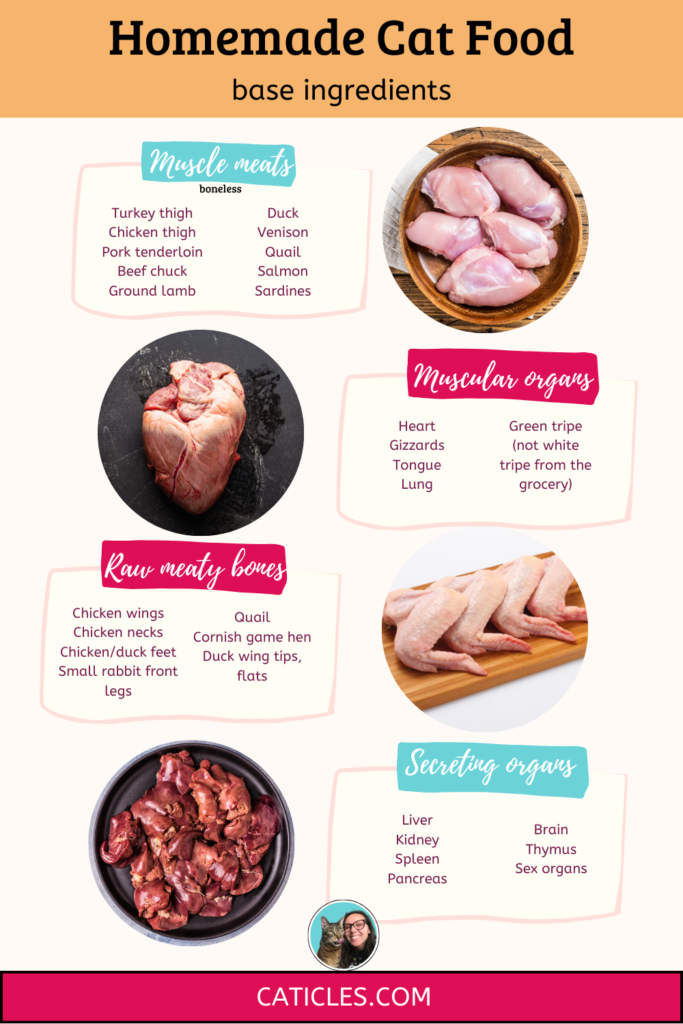The 80/10/10 ratio can work well for cats during the transition to raw. However, it may cause long-term deficiencies in essential nutrients like iron, zinc, manganese, iodine, and vitamins B1, B9, E, and D.
Variety is key. And some cats do not do well with 10% bone and 10% liver.
I’ve been raw feeding Jericho since 2018, and his diet has evolved with time.
It’s important to work with a nutritionist or use formulation software to create a complete recipe to make sure your cat gets everything.
Beware of free vet approved cat food recipes online. I checked 3 of them in diet formulation software, and they are not complete.
Here’s what I’ll cover in this 80 10 10 guide:
- What is an 80 10 10 diet for cats?
- Is 80 10 10 complete?
- What do I need to add to 80 10 10 to make it complete?
PS – If you’re ready to switch to a healthy raw diet, my Raw Feeding Blueprint is for you!
I’ve created the most supportive plan inside this course! Think, every week is planned out for you with printable trackers, 50+ balanced recipes to choose from, meal prep hacks, and so much more. If you’re ready to make your cat’s raw food at home, my Raw Feeding Blueprint course is for you!
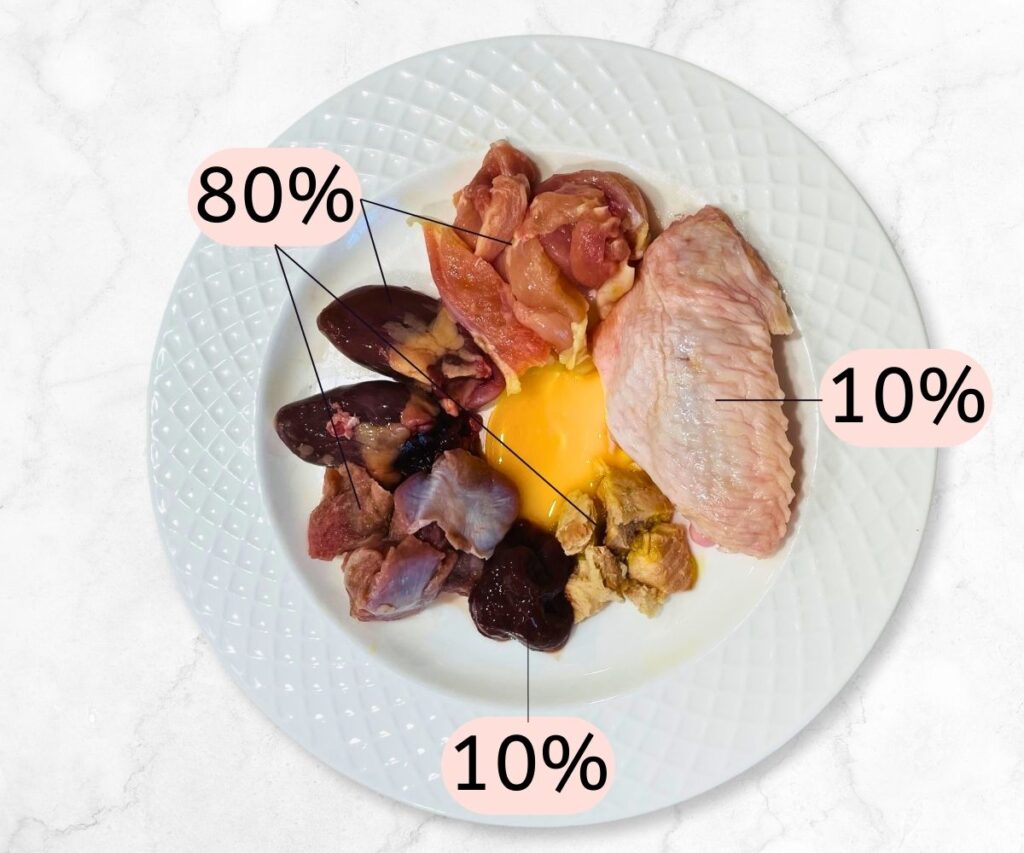
What is an 80 10 10 diet for cats?
The 80/10/10 diet follows BARF and PMR ratios that aim to mimic what whole prey provides.
80% muscle meat, 10% bone, and 10% secreting organs.
The 80% muscle meat would also include muscular organs like the heart, lungs, green tripe, gizzards, etc.
I use 80 10 10 as a baseline when formulating cat food recipes. And then I adjust to a better ratio for cats.
Variety is key. So we want to use as many proteins and cuts as we can.
Each animal provides a different nutrient profile. And feral cats eat 5-7 proteins to complete their diet.
It all comes down to mimicking as best we can what cats should eat: whole prey.
Jericho’s previous raw meaty bones diet followed this ratio:
- 10% whole prey
- 44% muscle meat
- 5% fish
- 21% muscular organ
- 8% raw meaty bones
- 12% secreting organs
The raw meaty bone percentage only accounts for the edible bone portion. The meat on the bone is counted toward the muscle meat category.
Jericho also eats raw egg yolks, algae, and nutritional yeast. But this is very a small amount – less than 1%.
I say previous because Jericho had a dental with teeth extractions. So I can no longer feed whole bones to him. Now he eats 50/50 whole prey and DIY ground raw. I have all the details inside Jericho’s raw diet plan.
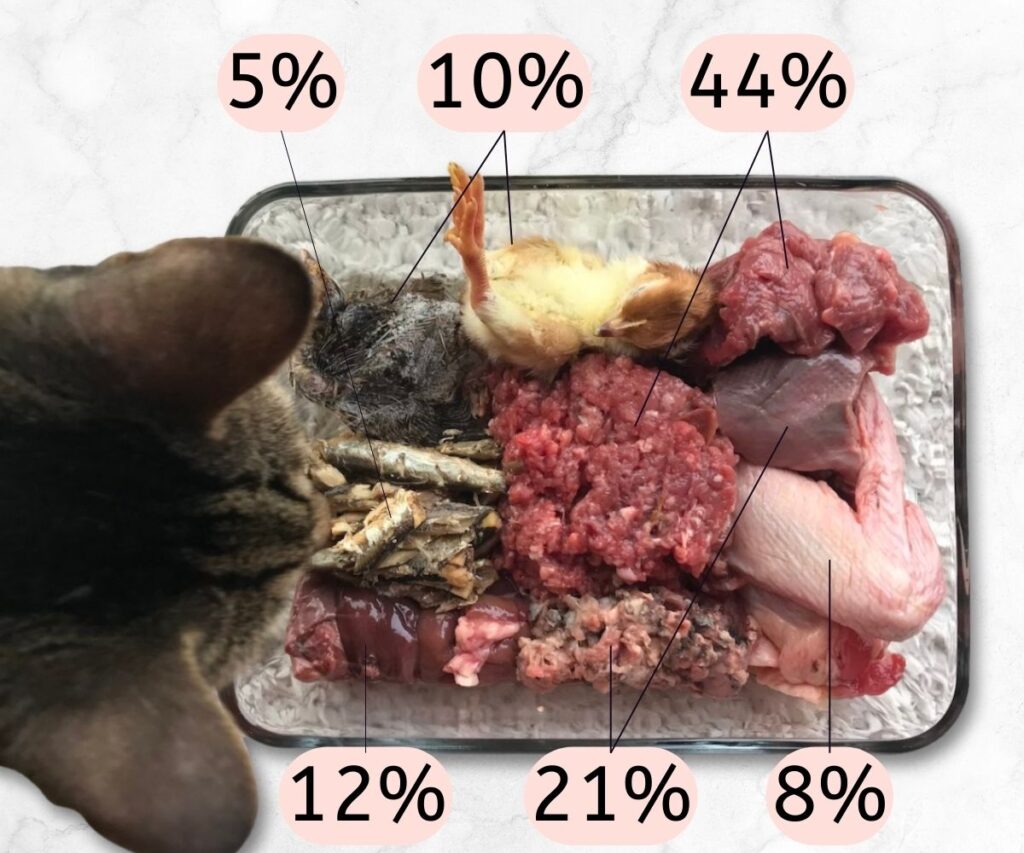
Is 80 10 10 complete?
No. 80 10 10 is not complete for cats. Typically 80 10 10 diets are deficient in essential nutrients like iron, zinc, manganese, iodine, and vitamins B1, E, and D.
Especially when there isn’t a lot of variety in the proteins and parts.
80 10 10 diet example
This 80 10 10 diet example includes a lot of variety.
Additionally, these are common cat food ingredients most people can get at the grocery store (aside from the green tripe).
| Ingredient | Percent |
| Muscle meat | 52% |
| Beef chuck stew meat | |
| Turkey thigh | |
| Muscular organs | 28% |
| Chicken heart | |
| Turkey gizzard | |
| Beef green tripe | |
| Raw meaty bones | 10% |
| Chicken neck | |
| Chicken wing | |
| Secreting organs | 10% |
| Beef liver | |
| Beef kidney |
This 80 10 10 recipe is deficient in the following nutrients:
- Iron
- Iodine
- Vitamin E
- Vitamin B1
The diet would be deficient in manganese without the green tripe. The only place to get green tripe is online. White tripe at the grocery store is not the same.
Additionally, the calcium to phosphorus ratio is only 0.9:1.
The ideal Ca:P ratio according to AAFCO and FEDIAF is 1:1. And the cat’s natural diet (mean average) is 1.5:1.
So this 80 10 10 recipe example is too low in calcium compared to its phosphorus content.
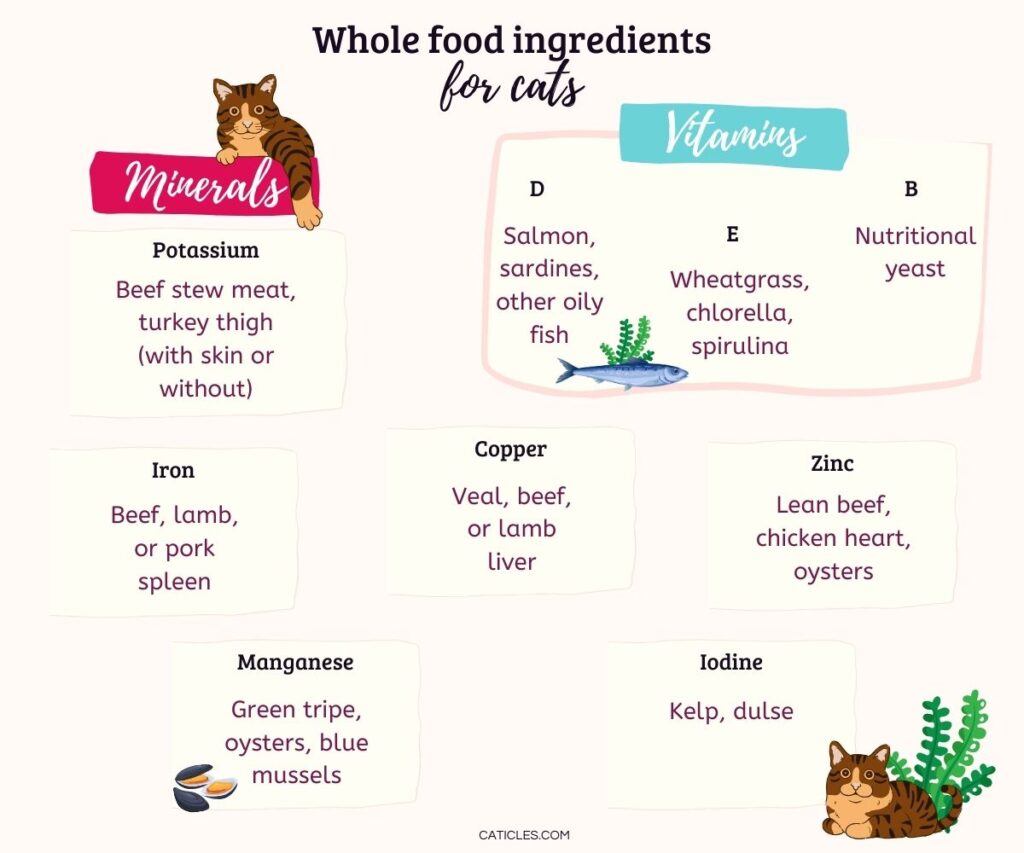
What do I need to add to 80 10 10 to make it complete?
It depends entirely on the raw cat food ingredients you are using and your cat’s nutritional needs.
Lack of variety in both proteins and cuts will require more supplements to fill in nutritional gaps.
The best approach is to use whole foods to complete your cat’s diet. Use a variety of proteins, muscle meats, muscular organs, and secreting organs.
| Nutrients lacking | Whole food sources |
| Potassium | Beef stew meat, turkey thigh |
| Iron | Beef, lamb, or pork spleen |
| Copper | Veal, beef, or lamb liver |
| Zinc | Lean beef, chicken heart, oysters |
| Manganese | Green tripe, blue mussels, oysters |
| Iodine | Kelp, dulse |
| Vitamin D | Oily fish |
| Vitamin E | Algae or supplement |
| B1 | Nutritional yeast |
| B9 | Chicken heart, beef liver, beef kidney |
I feed Jericho a lot of variety. So I only need to add algae (for iodine and vitamin E) and nutritional yeast (for B vitamins).
But don’t start adding ingredients and supplements blindly to your cat’s diet. And don’t follow what other people do (including me).
Work with a nutritionist or use formulation software to create a complete recipe for your cat.
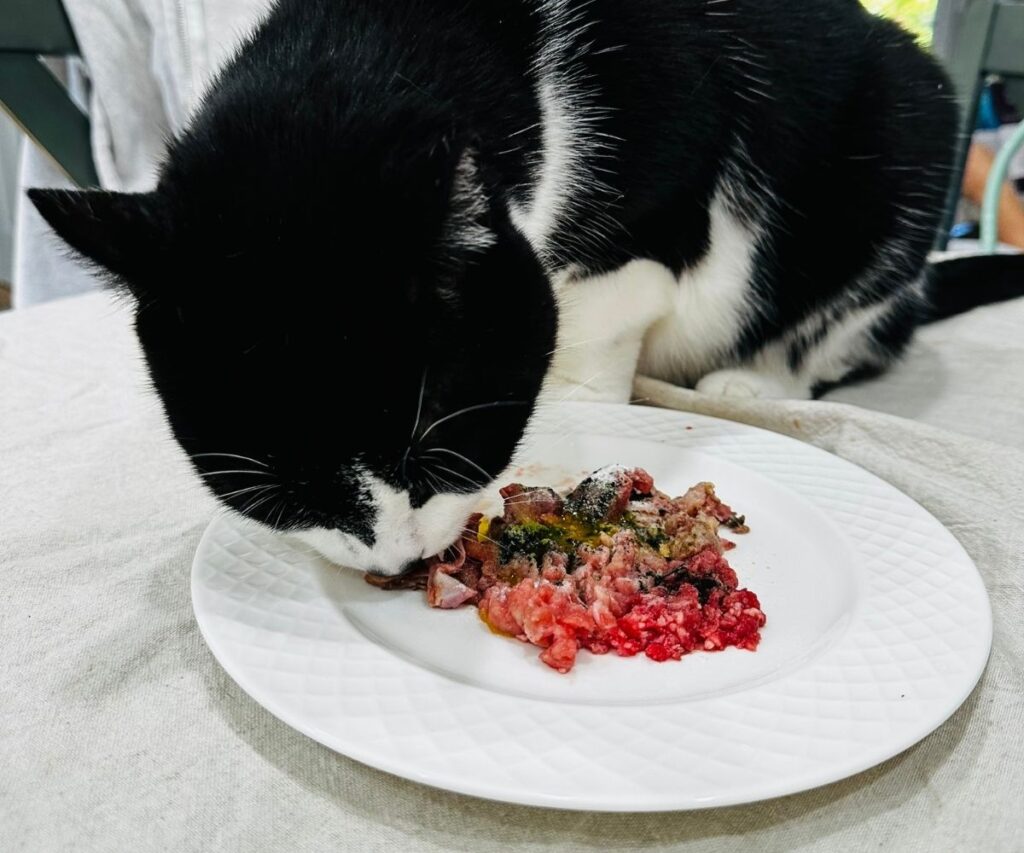
Final thoughts on 80 10 10 for cats
80 10 10 is a great baseline to use when you’re first starting homemade raw.
However, long-term deficiencies can happen. Especially with a lack of variety.
Variety in both proteins and parts is essential for cats.
We are trying to mimic whole prey. Cats eat 5-7 prey in the wild.
Even a variety-filled 80 10 10 diet can cause nutrient deficiencies.
So it’s best to work with a nutritionist or use formulation software to create a complete recipe for your cat.
Ready to switch to raw for a happier cat?
Grab my Raw Feeding Blueprint and get the same plan that 564+ cat parents used to switch to a healthy raw diet easily and confidently. Plus 50+ balanced raw recipes, meal prep tips, and so much more!
